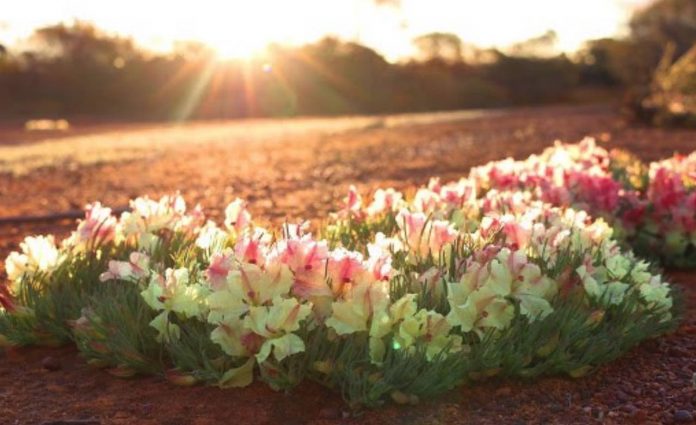Pack the car and get ready to discover the rare and magnificent sights of WA as Mother Nature blooms and wildflowers spring to life.
Wildflower season has started and recent rains are an encouraging sign that the season will be as spectacular as ever. There are more than 12,000 species of wildflowers in Western Australia, of which more than 60 per cent are found nowhere else in the world.
The colourful show started last month in the northern part of WA and moves south as the weather warms up during spring.
Australia’s Golden Outback CEO Marcus Falconer said that wildflowers are a natural phenomenon that usually attracts tourists from all over the world.
“The wildflowers across the region, from the rare and tiny orchids to the iconic carpets of colour, are an incredible sight to behold, and it seems that Western Australians will have them all to themselves this season,” he said.
“There’s never been a better time to jump in the car and explore WA’s Golden Outback – the variety of trips is amazing.”
There are six wildflowers itineraries on www.roadtripcountry.com.au to guide travellers to wildflowers and a live wildflower tracker map, an excellent resource to see where the blooms are currently popping up.
In the mid-section of WA’s Golden Outback around Morawa and Yalgoo, wreath flowers have started to develop, as spotted by Mellenbye Station manager Shelly Bogdan.
Mellenbye Station, about 430km north of Perth, has homestead, cottages, cabins, donga-style and shearing-quarters accommodation as well as caravan and camp sites, and staff who actively assist visitors to spot wildflowers.
“Visitors get most excited about the fields of everlastings and the wide vistas of colour, which we’re hoping to see in five or six weeks. It’s a very special experience to see wildflowers in bloom,” Ms Bogdan said.
“Sometimes you look and think, there’s not much out there, then a few days later, suddenly there’s colour everywhere.”
Morawa Visitors Centre chairman Paul Offszanka also reported sightings of wildflowers.
“Currently in flower are Blue Dampiera, Wattle, Common Popflower and Wild Tomato as well as some Hakeas. Around Canna, there are Blue Fairy, Donkey and Spider Orchids that have started. Some Ant Orchid buds have been spotted and there are pink and white Everlastings starting at Morawa and Bilya Rock. It’s an exciting time of year to go exploring,” he said.
While Morawa pops with colour during the day, at night the sky dazzles with the brilliance of the Milky Way and is a growing astro-tourism destination for its dark sky.
The jewel in WA’s wildflower crown is the Fitzgerald River National Park and the Ravensthorpe Range, about 500km south east of Perth, which contain 20 per cent of the state’s wildflowers.

Fitzgerald River National Park is a UNESCO gazetted World Biosphere Reserve, recognised as one of the most diverse botanical regions on the planet with about 1,800 flowering plants that include Royal Hakea, Qualup Bell, Sepulcralis, Weeping Gum, Pincushion Hakea, Woolly Banksia and Bottlebrush.
In nearby Ravensthorpe, nature’s flowers are celebrated at the Ravensthorpe Wildflower Show, one of the world’s biggest wildflower shows, which is confirmed for 7 to 16 September. Visitors to the show will get an in-depth experience with about 700 wildflowers on display, all picked within the local shire by licensed and trained volunteers.
About 200km further east along the coast, Esperance is also a wildflower hot spot and its celebration, the Esperance Wildflower Show, will be held soon after Ravensthorpe’s, from 22 to 26 September, showcasing about 500 species.
Other known places to spot wildflowers include the Northern Wheatbelt around Koolanooka Springs which is on the Wildflower Way road trip, Wongan Hills, Wave Rock, Narrogin, Lake Grace and the charming towns along the Wheatbelt Way where travellers can see masses of white, pink and yellow everlastings, up to 20 varieties of orchids and many bigger trees and shrubs including Melaleuca, Hakea, Grevillea, and Climbing Clematis vines.
Acacias are a feature around the granite rocks as well as the upside-down pea bush with red flowers.
From 3 August to 7 September, travellers spotting wildflowers can upload their photos to www.roadtripcountry.com.au/wildflowers for a chance to win a weekly $100 prize or the grand $500 prize.
For more information on road trips to wildflowers visit www.roadtripcountry.com.au.

































